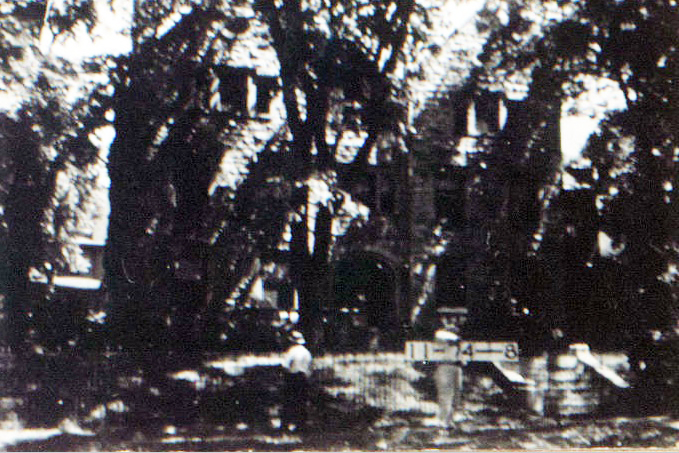
In the early 1900s, Armour Boulevard and its surrounding blocks were the center of life for many wealthy Kansas Citians, who built large mansions and lived comfortable lives attended by their servants. That’s true of the block between Armour and 36th Street from Walnut to Warwick. But by 1940, Armour’s elite residents had moved on, and their mansions had taken on new lives as commercial buildings.
As part of our Uncovering History Project, the Midtown KC Post is examining each block in Midtown. A set of 1940 tax assessment photos is available for many blocks.
The photos of today’s block, from Armour and 36th Street from Walnut to Warwick, are not of the best quality, but they hint at what the block looked like during the transition of the area.

A 1909 to 1950 Sanborn map of the block.
1900-1920

The Kansas City Star in 1906 pointed out the unusual features of the new Toll mansion, which included a lack of ornamentation on the outside, hot water heat and seven bathrooms.
Millionaire lumberman Albert Toll’s unusual mansion at 3500 Warwick, built in 1907, still stands high above other buildings on the block. The Toll family moved north from their former home on the southwest corner of Warwick and 36th that year.
Their neighbors included Banker Walton Holmes at 3510 Warwick, real estate man William Hall at 3521 Walnut, and lumber dealer Egbert Chapman at 3523 Walnut.
In 1909, “cracker king” Jacob Loose of the Loose-Wiles Biscuit Company built his elaborate home at 101 E. Armour. At 3520 Warwick, prominent real estate mogul John Groves settled in with his family.
The households listed on census rolls in these decades often included extended families as well as several servants for each of the homes. For example, in 1910:
- Widow Mrs. Alfred Toll’s household included a son, daughter-in-law, one grandson, and three granddaughters, as well as seven white servants: chauffeur Edward Jaderbog, Ella Uahr, Margarete Michaelis, Mary Cunningham, Margaret Cunningham, Mary O’Roefehe, and Julia Scanlon.
- Holmes lived with his wife Fleece (or Felice), a son, a niece, and three white servants.
- Groves shared his home with his wife, Elizabeth, and stepdaughter, as well as two white servants named Maggie Cahill and Mary Dennis and mulatto John Butler.
- William Hall lived with wife Adelaide, two daughters and a son, and a white servant named Grace Bosch.
- Chapman’s household included wife Lila, two sons, his mother, and a white Swedish servant named Sophie Nieberg.
Changes by 1940

The Loose Mansion in 1992.
But the glory years of Armour Boulevard, especially considering the quality of the mansions built by the Loose and Toll families and the Armour family on the north side of the boulevard, were short lived. In a 1945 article, The Kansas City Star explains:
“Armour Bouelvard’s glory was brief. It began to grow great about the turn of the twentieth century and in two decades the wealthy persons who had built ornate homes there had for the most part moved further south and were looking for insurance companies to buy their Armour Boulevard homes. Mrs. Jacob Leander Loose, at the southwest corner of Armour boulevard and Walnut, was successful. The Phil Toll house at the southwest corner of Warwick and Armour stands as a melancholy monument to underachieved ambition; remodeling it for business purposes started but never finished.”
The Toll family had moved south to a farm in the 1920s. The large home served as the campus of the Kansas Cityor a whil Art Institute fe until it moved to its current home. In the 1940s, Mrs. Loose moved into the city’s then-largest apartment in the Walnut apartment building, which overlooked Jacob Loose Memorial Park, her gift to the city. As the article suggests, Mrs. Loose sold the family home to an insurance company that planned to turn it into offices but never completed its plans.
The photos below show the rest of the homes on the block as they looked in 1940.









Historic photos courtesy Kansas City Public Library/Missouri Valley Special Collections.
Yeah, found the article about the Loose house. Great!